Thingiverse
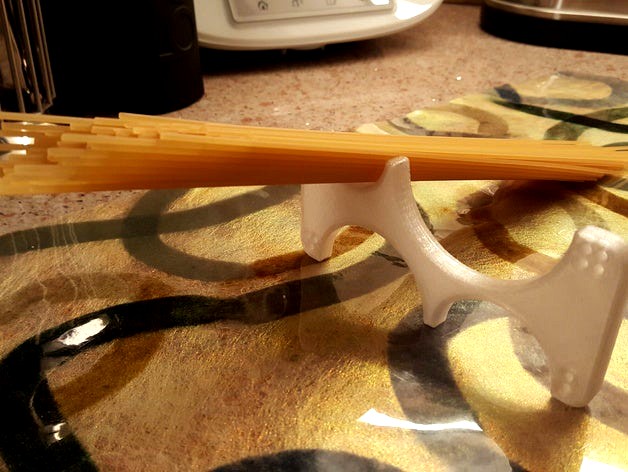
Another -but different and geometrically proportionate- spaghetti measuring tool by Fernando_R
by Thingiverse
Last crawled date: 3 years ago
Perhaps it's my clumsiness, but I find the standard designs, based on round openings, hard to use. Either I end up with a fistful of spaghetti loosely dangling in the hole (hence eliminating the measurement goal) or individually squeezing -sometimes breaking- the last ones.
Moreover, I found that many of the "standard" published measures are simply not proportionate, i.e., the area of the hole for 2, 3 or 4 servings is substantially different (sometimes up to 22%) from 2, 3 or 4 times that of a single serving. Curiously, servings for 2 tend to be the smallest (vs. twice a single one). Perhaps trying to avoid criticism from weight-conscious partners :-) ? Check for yourselves if you don't believe me. The math is simple: Area = π (3.1416) times the square of the radius -in excel, +PI()*R^2-.
The "standard" individual serving also varies substantially, ranging from diameters of 17mm (0.67") to 23mm (0.91"). It may not seem much (35%), but when you square the radius, the difference in area amounts to 83%! Of course, traditional "index & thumb" rules will also be widely different (a "Boban Marjanović serving" will surely be plenty for anyone), but that's not the intent.
I've settled for a rough average of the most widespread "standards", equivalent to a 21mm (0.83") diameter for a single portion. And yes, the area for 2, 3 or 4 servings is exactly 2, 3 or 4 times bigger. If you find it too scarce or too generous, just scale it up or down, but be aware, any linear in-/decrease will yield a square in-/decrement. For example, a 10% linear upsize represents a 21% increase of the resulting portions (1.1x1.1=1.21), 20% (1.2x1.2=1.44) 44%, and so on. Still, large or small, the servings will remain proportionate.
About the design, I found the proposal (www.thingiverse.com/thing:961715) of Engineer89 inspiring. Not only his servings are exactly proportionate (as could be expected from an engineer, @ 350 mm2 each), it also allows to simply drop the spaghetti on top and remove the excess. However, it's a bit bulky to fit in our already packed kitchen drawers. So, I decided to "open up" the traditional circles and use instead appropriately resized semicircles. It's not as stable, but it does stand sideways reasonably well. All edges are rounded for additional safety.
Concerning printing, I've used PET-G to make it "dishwasher-safe", but almost any material will do. 30% infill seems strong enough, unless you want to print a wafer-thin version, in which case flexibility will be key (avoid PLA). Food compatibility should not be a concern because contact will be minimal and brief.
I've created two versions, one w/ roman numerals (+Braille on the top side) and a more symbolic -and easier to print w/ some materials- one. Besides STL, SKP, DXF and 3DM (Rhino 5) formats are also included, to facilitate remixing/personalization.
Happy printing -and cooking-!
Note: Upon use, I found that if the kitchen desktop is very smooth, dropped spaghetti tend to slide away. Put a non slippery mat under it, or place an adequate barrier (e.g., the spaghetti box/bag) aside to prevent it.
Moreover, I found that many of the "standard" published measures are simply not proportionate, i.e., the area of the hole for 2, 3 or 4 servings is substantially different (sometimes up to 22%) from 2, 3 or 4 times that of a single serving. Curiously, servings for 2 tend to be the smallest (vs. twice a single one). Perhaps trying to avoid criticism from weight-conscious partners :-) ? Check for yourselves if you don't believe me. The math is simple: Area = π (3.1416) times the square of the radius -in excel, +PI()*R^2-.
The "standard" individual serving also varies substantially, ranging from diameters of 17mm (0.67") to 23mm (0.91"). It may not seem much (35%), but when you square the radius, the difference in area amounts to 83%! Of course, traditional "index & thumb" rules will also be widely different (a "Boban Marjanović serving" will surely be plenty for anyone), but that's not the intent.
I've settled for a rough average of the most widespread "standards", equivalent to a 21mm (0.83") diameter for a single portion. And yes, the area for 2, 3 or 4 servings is exactly 2, 3 or 4 times bigger. If you find it too scarce or too generous, just scale it up or down, but be aware, any linear in-/decrease will yield a square in-/decrement. For example, a 10% linear upsize represents a 21% increase of the resulting portions (1.1x1.1=1.21), 20% (1.2x1.2=1.44) 44%, and so on. Still, large or small, the servings will remain proportionate.
About the design, I found the proposal (www.thingiverse.com/thing:961715) of Engineer89 inspiring. Not only his servings are exactly proportionate (as could be expected from an engineer, @ 350 mm2 each), it also allows to simply drop the spaghetti on top and remove the excess. However, it's a bit bulky to fit in our already packed kitchen drawers. So, I decided to "open up" the traditional circles and use instead appropriately resized semicircles. It's not as stable, but it does stand sideways reasonably well. All edges are rounded for additional safety.
Concerning printing, I've used PET-G to make it "dishwasher-safe", but almost any material will do. 30% infill seems strong enough, unless you want to print a wafer-thin version, in which case flexibility will be key (avoid PLA). Food compatibility should not be a concern because contact will be minimal and brief.
I've created two versions, one w/ roman numerals (+Braille on the top side) and a more symbolic -and easier to print w/ some materials- one. Besides STL, SKP, DXF and 3DM (Rhino 5) formats are also included, to facilitate remixing/personalization.
Happy printing -and cooking-!
Note: Upon use, I found that if the kitchen desktop is very smooth, dropped spaghetti tend to slide away. Put a non slippery mat under it, or place an adequate barrier (e.g., the spaghetti box/bag) aside to prevent it.
Similar models
thingiverse
free

Spaghetti Pasta Measure by Eskimo3D
...spaghetti pasta measure by eskimo3d
thingiverse
measures out portions for 1-4 servings
thingiverse
free

Spaghetti measurer with T-Rex by Saur0n
...uld eat a t-rex" - i've just made 3d object :)
you can measure pasta portions for child, woman, man and t-rex (4 person)
thingiverse
free

Spaghetti Measurement (Single Household) by justjoheinz
... portion is 11mm and is sufficient for a single portion of pasta.
the second file has a radius of 14.5 mm and is for two persons.
thingiverse
free

Spaghetti measure
...spaghetti measure
thingiverse
a tool to help measure spaghetti.
it has holes for 1 serve, 2 serves or 4 serves
thingiverse
free

Spaghetti Portion measure by AlistairM
...spaghetti portion measure by alistairm
thingiverse
measure spaghetti portions for 1 to 4 people.
thingiverse
free

Spaghetti Serving Measurer by whttigress
...serving measurer by whttigress
thingiverse
this spaghetti measurer hold approximately 2 servings on one side and 3 on the other.
thingiverse
free

Spaghetti Measuring Tool by DrDaniel
...0 mm around and the largest one is 120mm around
(well, plus .14 but who's counting)
who knew math and spaghetti were related!
thingiverse
free

Spaghetti Measure by galacticfan
...spaghetti measure by galacticfan
thingiverse
a simple spaghetti measure for 1 and 2 portions.
thingiverse
free

Gauge Block by i3Dsd
.../8", 1/2" and 3/4") in round and square shape. measures contour and height. also it has holes of 1/3 of a measure.
thingiverse
free

Spaghetti Measuring Tool by LeiLeiSvines
...ign that makes it easy to print on even small beds. the curved design makes it easy to fit and can be hung up or stored anywhere.
Proportionate
3d_export
$8

aleria upholstered steel swivel chair
...tered steel swivel chair<br>proportionally fit<br>ready to use in scene<br>3dsmax 2014<br>with obj format
3d_ocean
$14

Air Craft 3D Model Cessna 17
...model was created on real cessna 17. it’s created proportionatey , in real units of measurement, qualitatively and maximally...
thingiverse
free

Golden Ratio Proportioner
...tio proportioner
thingiverse
golden ratio proportioner. no supports required. no additional hardware.
print 3 of the small nuts.
3dfindit
free

In-Line Balanced Pressure Proportioner Model VLF
...in-line balanced pressure proportioner model vlf
3dfind.it
catalog: viking
thingiverse
free

Mr Awesome by sjs_scott
...mr awesome by sjs_scott
thingiverse
a dis-proportionally buffed hero making the world a better place.
3d_sky
free

TUMIDEI / TIRAMOLA / comp. 742
...tiramola / comp. 742 3dsky furniture modelil on fotke proportionatey. ...
thingiverse
free

Spitfire Xiv by Yellasing
...spitfire xiv by yellasing thingiverse proportionate model of the iconic supermarine spitfire. printed in 2...
thingiverse
free

Icosidodecahedron (Da Vinci and Pacioli) by Professortiz
...se
a skeletal icosidodecahedron, modeled after leonardo da vinci's illustration in luca pacioli's da divina proportione.
thingiverse
free

BudashMask Remix by Karolko
...aled up to 120%, with proportionally scaled other parts to fit better.
strap mounts were redesigned for easy printing w/o support
Spaghetti
3d_export
$19

spaghetti
...spaghetti
3dexport
archive3d
free

Spaghetti 3D Model
...hive3d
spaghetti jar macaroni
spaghetti - 3d model (*.gsm+*.3ds) for interior 3d visualization.
3d_export
$5

spaghetti squash
...spaghetti squash
3dexport
3d_ocean
$3
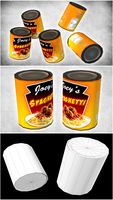
Canned Spaghetti
...rfect for games such as fps / survival / simulation etc. both clean and dirty textured in high quality low poly (126 polygons ...
3ddd
$1

Spaghetti
...скусство конкурс
spaghetti 3d model
3ds max 2011, fbx, unwrap textures
polys: 452785
verts: 486181
support: info@bysstudio.com
turbosquid
$1

Butterfly spaghetti
...royalty free 3d model butterfly spaghetti for download as max on turbosquid: 3d models for games, architecture, videos. (1448688)
turbosquid
$2

ladle for spaghetti
...ee 3d model ladle for spaghetti for download as blend and fbx on turbosquid: 3d models for games, architecture, videos. (1632648)
turbosquid
$2

ladle for spaghetti
...ee 3d model ladle for spaghetti for download as blend and fbx on turbosquid: 3d models for games, architecture, videos. (1632450)
3ddd
$1

Подвазонник SPAGHETTI
...подвазонник spaghetti
3ddd
ваза
spaghetti горшок разработан каrim rashid для vondom.
габариты - ø 45 х 105 см. высотой
+ вазон
turbosquid
$10

Spaghetti Spoon
...ree 3d model spaghetti spoon for download as ma, obj, and fbx on turbosquid: 3d models for games, architecture, videos. (1240603)
Fernando
3ddd
$1

Fernando Morello
...fernando morello
3ddd
fernando morello , капитоне
итальянская кровать fernando morello
3ddd
$1

Fernando Morello
...fernando morello
3ddd
fernando morello , тумба
fernando morello
ш*г*в-173*55*85
3ddd
$1

Fernando Morello
...rello
3ddd
fernando morello , трюмо
парфюмерный столик fernando morello
ш*г*в-202*193*60
turbosquid
$125

Fernando Alonso 2019
...nso indy 2019 for download as ma, 3ds, obj, c4d, fbx, and dae on turbosquid: 3d models for games, architecture, videos. (1407322)
cg_studio
$125

Fernando Alonso 20163d model
...bj .mb .max .fbx .dae .c4d .3ds - fernando alonso 2016 3d model, royalty free license available, instant download after purchase.
cg_studio
$59

Fernando Alonso 20153d model
...o
.obj .mb .max .fbx .c4d .3ds - fernando alonso 2015 3d model, royalty free license available, instant download after purchase.
turbosquid
$49

Fernando Alonso Helmet 2015
... available on turbo squid, the world's leading provider of digital 3d models for visualization, films, television, and games.
turbosquid
$12

CADEIRA MARINA - FERNANDO JAEGER
... available on turbo squid, the world's leading provider of digital 3d models for visualization, films, television, and games.
turbosquid
$5

Deliciosa Chair - Fernando Jaeger
... available on turbo squid, the world's leading provider of digital 3d models for visualization, films, television, and games.
cg_studio
$49

Fernando Alonso helmet 20153d model
... .mb .max .fbx .c4d .3ds - fernando alonso helmet 2015 3d model, royalty free license available, instant download after purchase.
Geometrically
3d_export
$5

geometric character
...geometric character
3dexport
geometric character
design_connected
$11
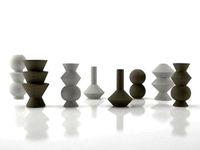
Geometric Vases
...geometric vases
designconnected
ferm living geometric vases computer generated 3d model.
3d_export
$5
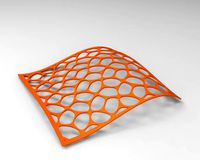
geometric pattern
...geometric pattern
3dexport
geometric pattern-3d printer -laser-plasma -router plant
design_connected
$16

Geometric Armchair
...geometric armchair
designconnected
n/a geometric armchair armchairs computer generated 3d model. designed by n/a.
turbosquid
$10

Geometric Rugs
...uid
royalty free 3d model geometric rugs for download as max on turbosquid: 3d models for games, architecture, videos. (1201561)
3ddd
free

Обои Madison Geometrics
... wallquest
обои madison geometrics студия paper & ink (by wallquest, сша) 61 текстура
3d_export
$5

geometric flowerpot
...geometric flowerpot
3dexport
turbosquid
$10

Geometric two
...free 3d model geometric two for download as max, obj, and fbx on turbosquid: 3d models for games, architecture, videos. (1374239)
turbosquid
$10

Geometric one
...free 3d model geometric one for download as max, obj, and fbx on turbosquid: 3d models for games, architecture, videos. (1374194)
turbosquid
$10

Geometric table
...odel geometric table for download as max, obj, fbx, and blend on turbosquid: 3d models for games, architecture, videos. (1406545)
R
3ddd
$1

ORLANDO R
...orlando r
3ddd
новый стиль
новый стиль - orlando r
design_connected
$11

R-Table
...r-table
designconnected
henge r-table computer generated 3d model. designed by castagna, massimo.
design_connected
$7
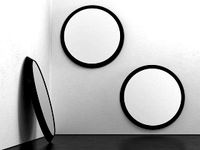
Cone R
...cone r
designconnected
bonaldo cone r computer generated 3d model. designed by pasini, ennio.
3ddd
$1

R&B
...r&b
3ddd
r&b
спальный гарнитур r&b;
3d_export
$5

nissan gt-r
...nissan gt-r
3dexport
this is nissan gt-r
turbosquid
$10

R for ROBOT
...osquid
royalty free 3d model r for robot for download as max on turbosquid: 3d models for games, architecture, videos. (1694233)
turbosquid
$5

Letter r
...urbosquid
royalty free 3d model letter r for download as max on turbosquid: 3d models for games, architecture, videos. (1408525)
turbosquid
$5

Letter R
...urbosquid
royalty free 3d model letter r for download as max on turbosquid: 3d models for games, architecture, videos. (1408526)
3d_export
$5
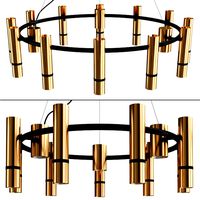
react r
...r 9 lamps (6+3) ø 60 × 21 cm 12 lamps (9+3) ø 80 × 21 cm polys: 208 539 verts: 213 675 https://ru.lampachn.com/react-r-p0551.html
turbosquid
$40
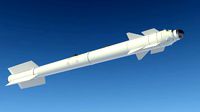
R-73
...uid
royalty free 3d model r-73 for download as blend and fbx on turbosquid: 3d models for games, architecture, videos. (1620664)
Another
turbosquid
$15
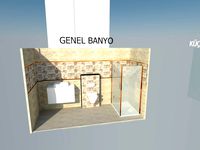
ANOTHER BATHROOM
...quid
royalty free 3d model another bathroom for download as on turbosquid: 3d models for games, architecture, videos. (1171460)
turbosquid
$24

Another World
... available on turbo squid, the world's leading provider of digital 3d models for visualization, films, television, and games.
turbosquid
$39
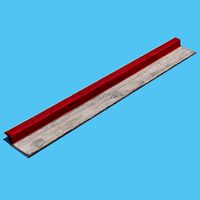
Another Red Curb
...ee 3d model another red curb for download as ma, obj, and fbx on turbosquid: 3d models for games, architecture, videos. (1182913)
turbosquid
$9

Another Deberenn Sofa
...model another deberenn sofa for download as max, obj, and fbx on turbosquid: 3d models for games, architecture, videos. (1497850)
turbosquid
$2

Another picnic table
... model another picnic table for download as max, obj, and fbx on turbosquid: 3d models for games, architecture, videos. (1426381)
turbosquid
$15

door to another world
...oor to another world for download as 3ds, obj, fbx, and blend on turbosquid: 3d models for games, architecture, videos. (1334842)
3d_export
free

another hacksaw
...another hacksaw
3dexport
. . . 3d model of a hacksaw. 3d model files: - 3ds max 2017 (scanline) - obj (low poly) . . .
turbosquid
$12

Another Country Side Table
... another country side table for download as max, obj, and fbx on turbosquid: 3d models for games, architecture, videos. (1496053)
turbosquid
$29

Furniture - "Another country" modern sofa
...another country" modern sofa for download as obj and c4d on turbosquid: 3d models for games, architecture, videos. (1186189)
3d_ocean
$29

Another Tron Light Cycle with the Rider and Trail
...ther tron light cycle with the rider and the light trail. high quality 3d model,all the materials and lights are included. the...
Measuring
3d_export
$5
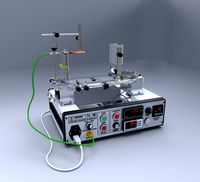
measuring instrument
...measuring instrument
3dexport
measuring instrument
3d_export
$10
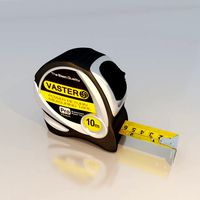
measuring tape
...ng tape
3dexport
measuring tape 3dmodel includes all materials , texture and lighting ,3dmax , 3ds , obj , dw. rendererd by vray
turbosquid
$15

Tape Measure
...uid
royalty free 3d model tape measure for download as blend on turbosquid: 3d models for games, architecture, videos. (1700720)
turbosquid
$5

Tape measures
...quid
royalty free 3d model tape measures for download as max on turbosquid: 3d models for games, architecture, videos. (1319446)
turbosquid
$5

Measuring Cups
... 3d model measuring cups for download as fbx and unitypackage on turbosquid: 3d models for games, architecture, videos. (1289678)
turbosquid
$3

Measuring Spoons
...d model measuring spoons for download as fbx and unitypackage on turbosquid: 3d models for games, architecture, videos. (1289679)
turbosquid
$55
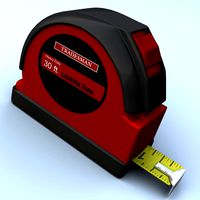
Tape Measurer
... available on turbo squid, the world's leading provider of digital 3d models for visualization, films, television, and games.
turbosquid
$39

Tape Measure
... available on turbo squid, the world's leading provider of digital 3d models for visualization, films, television, and games.
turbosquid
$39
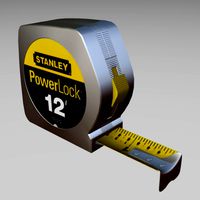
Tape Measure
... available on turbo squid, the world's leading provider of digital 3d models for visualization, films, television, and games.
turbosquid
$32

Tape Measurer
... available on turbo squid, the world's leading provider of digital 3d models for visualization, films, television, and games.
Tool
turbosquid
$21

Tool box with tools
... available on turbo squid, the world's leading provider of digital 3d models for visualization, films, television, and games.
archibase_planet
free

Tools
...tools
archibase planet
tools instruments implements
tools n070114 - 3d model (*.gsm+*.3ds+*.max) for interior 3d visualization.
3d_ocean
$12

Tools
...tools
3docean
hammer metal old screw tools wrench
maya
turbosquid
$6

Tool Cart / Tool Box
...
royalty free 3d model tool cart / tool box for download as on turbosquid: 3d models for games, architecture, videos. (1241859)
3d_ocean
$15

crimp tool
... tool copper cutter crimp crimp tool electrical electrical tools press tools pressing tool tools wire cutter
created in maya 2013
3d_ocean
$5

Tools
...tools
3docean
3d models paint tools work
3d,models,works,paint,art,create,working,
3d_export
free
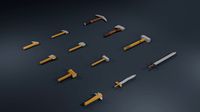
tools
...tools
3dexport
coldsteel
turbosquid
$15
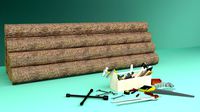
Tools
...turbosquid
royalty free 3d model tools for download as blend on turbosquid: 3d models for games, architecture, videos. (1331352)
3ddd
$1

bar tool
...bar tool
3ddd
барный
bar tool
turbosquid
$35

tools
... available on turbo squid, the world's leading provider of digital 3d models for visualization, films, television, and games.
Different
turbosquid
free
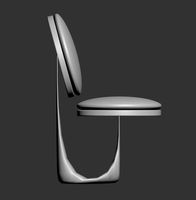
Different Chair
...id
free 3d model different chair for download as max and fbx on turbosquid: 3d models for games, architecture, videos. (1642013)
turbosquid
free

different rubbish
... available on turbo squid, the world's leading provider of digital 3d models for visualization, films, television, and games.
3d_export
$10

Different 3D Model
...different 3d model
3dexport
different 3d model wintik174 96497 3dexport
3d_export
free

three different type
...three different type
3dexport
three different type: mace, axe, sword
3d_ocean
$10

Different types of gears
... industrial parts machine gears machine parts mechanics parts round shape
different types of machine parts/gears made in blender.
turbosquid
free

Wires in different colours
...ires in different colours for download as blend, fbx, and obj on turbosquid: 3d models for games, architecture, videos. (1652797)
turbosquid
$6

3 Different Arrows
...3d model 3 different arrows for download as 3ds, obj, and fbx on turbosquid: 3d models for games, architecture, videos. (1478401)
turbosquid
$4

Four Different Vases
...odel four different vases for download as obj, fbx, and blend on turbosquid: 3d models for games, architecture, videos. (1484813)
3d_ocean
$3

8 Different Stone
...ures : low poly mesh & hand painting texture ~contain normal map ~different mesh have any problem? feel free to contact me...
turbosquid
$45

Different Food Products
... food products for download as blend, max, fbx, gltf, and obj on turbosquid: 3d models for games, architecture, videos. (1614198)
